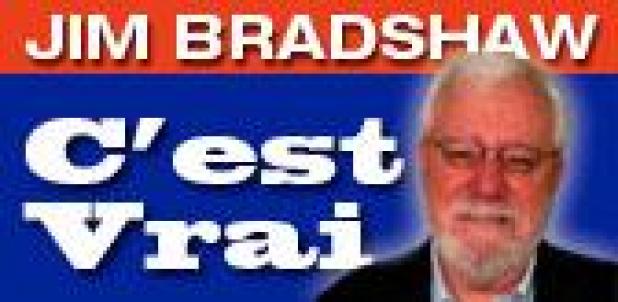
Jim Bradshaw: Locals helped oil men navigate Louisiana swamps
When oil companies began to realize that muskrats weren’t the only profitable thing hiding in south Louisiana marshes, they also began to realize that exploration and drilling in the wetlands would be unlike anything they’d done before.
Chronicler Raymond Lankford noted in a history of the oil industry, “There were no roads in the marshes, no bridges over the bayous, no bases from which to move into the bays. The whole expanse from Calcasieu Lake to Breton Sound was a sort of nature’s no-man’s land, neither land nor sea.” ("History of Oil Well Drilling," Gulf Publishing, Houston, 1971.)
When serious exploration began in the wetlands in the middle 1920s, seismic crews had to use pretty much the same pirogues as the men who hunted for muskrats, and often hired the trappers and their friends as guides.
Companies “had to tap into local knowledge of the confusing and forbidding terrain,” according to a history by the Minerals Management Service of offshore exploration ("History of the Offshore Oil and Gas Industry in Southern Louisiana, Volume I: Papers on the Evolving Offshore Industry," OCS Study MMS 2008-042).
“A crew would typically rent boats and hire laborers and guides in the small Cajun communities where people traditionally made their living variously by fishing, shrimping, crabbing, frog hunting, muskrat trapping, salt mining, or harvesting sugar, rice tobacco, moss, or oysters,” the MMS recorded.
In those early days, a typical exploration crew might include 10 seismologists and technicians and as many as 30 helpers hired from local communities.
They worked 10 days, then took four off, using pirogues to navigate the trainasses (tiny canals) that sometimes wound through marshland, or sometimes just petered out in tall grass. The locals were important because they knew which canal went where.
Sometimes, though, the crews had to push on past the dead-ends, carrying equipment for some of “the longest miles in the U.S.A.,” according to a feature in Shell’s company publication in March 1939.
The laborers bound their pants legs at their ankles “to protect against snakes and leeches,” then toted heavy loads through “waste deep swamp water ... dodging cypress roots and saw-toothed palmetto leaves.”
Usually their hands were too full to slap at the swarms of mosquitoes that found them easy prey.
“Instruments, explosives, pumps and pipe for drilling, cables, and all other paraphernalia of the seismologist’s art must be carried distances often of miles, and at a rate rarely exceeding one mile per hour,” according to the Shell feature.
That sounds right. When Father William Teurlings wrote a little book about his days as pastor at Cameron, he titled it “One Mile an Hour,” because, he said, that was the rate that his horse could move through the marshland.
The equipment the seismic crews carried was often heavy and awkward, but the “cases and cases of dynamite” the “swamp mules” carried posed the biggest risk.
Typically, workers would screw a piece of heavy casing three to five feet into the marsh mud, fill that with up to 50 pounds of dynamite, and then hunker down in the marsh grass while the detonation sent up “a tall geyser of water, mud, and plant particles.” The explosion would also leave a deep crater in the marsh for the next unsuspecting crew to wade into.
“If you didn’t know about it, and you walked into it, you went right down,” one old-timer recalled in an MMS interview. “And if you had a load on your back, it was pretty doggone hard to get up out of the water.”
The locals were important because of their skill as guides and the strength of their backs, but the oil companies soon found out that they offered something else that was perhaps more important. They spoke Cajun French.
“Obtaining permits to survey from local landowners was much easier from a fellow … French-speaking Cajun than it was from an English-speaking company man from Texas,’ according to the MMS history.
That made things easier, the historians said, at least until the landowner fell into a dynamite hole.
A collection of Jim Bradshaw’s columns, "Cajuns and Other Characters," is now available from Pelican Publishing. You can contact him at jimbradshaw4321@gmail.com or P.O. Box 1121, Washington LA 70589.
